Behind the Scenes at Boston Ballet’s Sleeping Beauty Costume Shop

Photo by Madeline Bilis
When the curtains open for the season premiere of the Boston Ballet’s The Sleeping Beauty this month, it’ll be impossible to tell that the delicate costumes flitting across the stage are more than 40 years old.
Indeed, the tutus, petticoats, vests, dresses, jackets, and other period pieces are older than most of the dancers wearing them. Created in London in the 1970s by prominent theater designer David Walker, the costumes have appeared in hundreds of shows over the years. Even after decades of use, they appear brand new, thanks to the almost magical efforts of stitchers in the Boston Ballet costume shop.
A team of costume technicians has been meticulously maintaining the costumes since the Boston Ballet purchased the more than 300 ensembles from London’s Royal Ballet in the early 1990s. In addition to using them for their own showings of The Sleeping Beauty, the Boston Ballet also rents the costumes out to theaters across the country.
“They get a lot of work done to them every single time they’re used by us,” explains Heather McLernon, wardrobe supervisor for Boston Ballet. It’s careful refurbishing work that assistant wardrobe supervisor Ezra Lovesky calls “freshening up.”
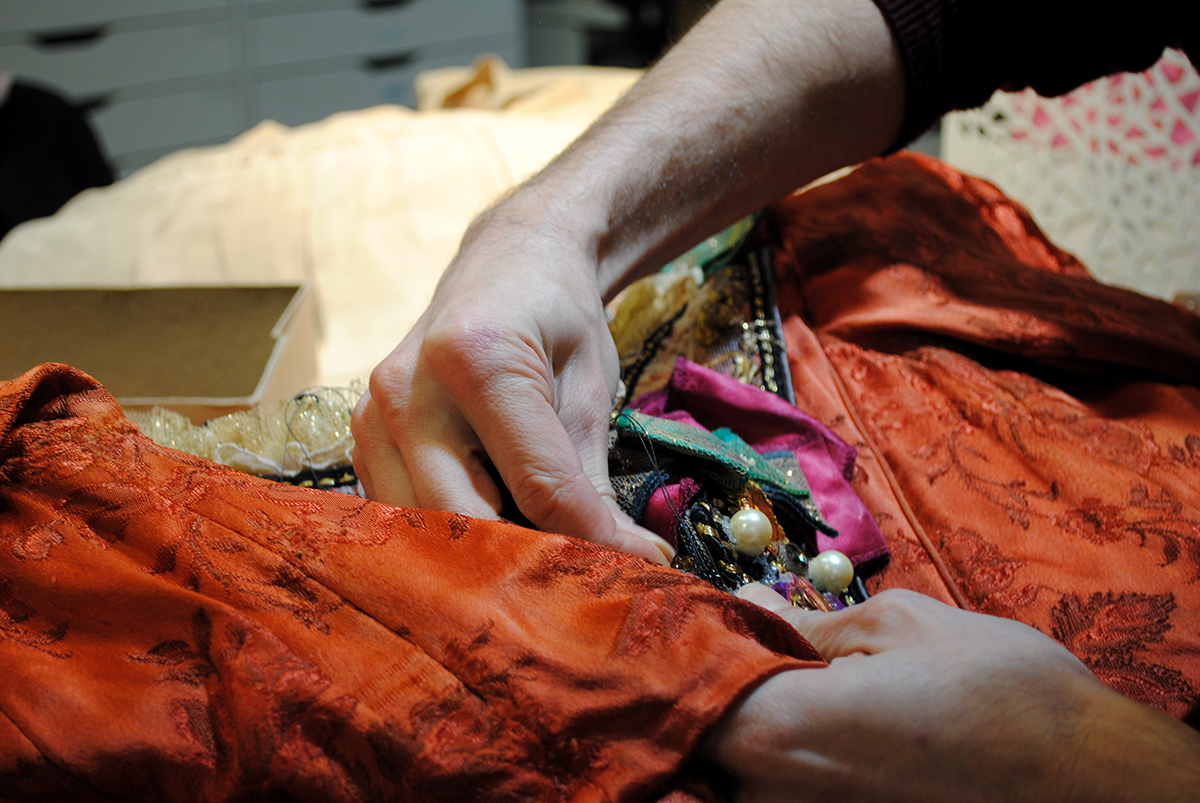
Photo by Madeline Bilis
On a Wednesday afternoon in April—a little over a week before the show is set to open—costume technicians can be seen doing just that. Amidst towers of tutus and an army of dress forms donning colorful jackets, they focus on making the garments appear fresh by adding new trim, repairing tears, and mending fragile details like attached jewels and lace. They’ve spent months getting to this point, with the process starting off with measurement work last August.
“We fit them to the dancer’s body who are specifically cast in the role, and then with the new measurements we make the costume fit and make it both functional and stage ready,” says Lovesky. The making of a stage-ready costume involves tasks ranging from mending coat cuffs to revitalizing tutus. To bring drooping tutus back to life, McLernon says she dyes new netting to match the garment’s original color, then adds in a few stiff underlayers to perk it up.
While many of the pieces look fragile, a combination of sturdy construction and years of diligent upkeep have kept the costumes in excellent condition all these years. “‘In the ‘70s they were built differently,” says McLernon. “They were just better built.”
They’re almost timeless, too, except for one unfortunate ‘70s detail: puff paint. “Puff paint was just invented when these costumes were originally made,” says Lovesky, laughing. “It was very innovative back then and almost all of them have it.”
Besides being a somewhat gaudy addition to an elegant collection of costumes, the puff paint designs are painful in more ways than one. The details were soft-feeling when they were piped out of tiny paint bottles back in the day, but now they’re crusted and hard. Some designs are so sharp that they’ve cut dancers’ tights—but costumers have put an end to that by placing netting over the poking parts. Sometimes, though, the only solution is more puff paint. “You try and follow what the original design is as much as possible, and (we) did actually re-puff paint a bunch of stuff,” says McLernon, pointing to the stacked tutus in the stock room adjoining the shop.

Photo by Madeline Bilis
Back in the main work area, several jackets lay spread out on a sewing table, waiting for cuff trim. They’re part of a set for the mazurka dancers in the show, and were made new this year to duplicate a group of old ones that were falling apart. Similarly, there’s a mix of decades-old and newly rebuilt dresses for the show’s Vision Nymphs. The old and new dresses are virtually the same, save for a different fabric lining the inside of the garment.
It seems the costumes, much like The Sleeping Beauty, never get old.
Here, take a peek into the inner workings of the Boston Ballet costume shop before Marius Petipa’s The Sleeping Beauty debuts next week.

Photo by Madeline Bilis
Assistant wardrobe supervisor Ezra Lovesky sorts through a rack of jackets in the stock room.
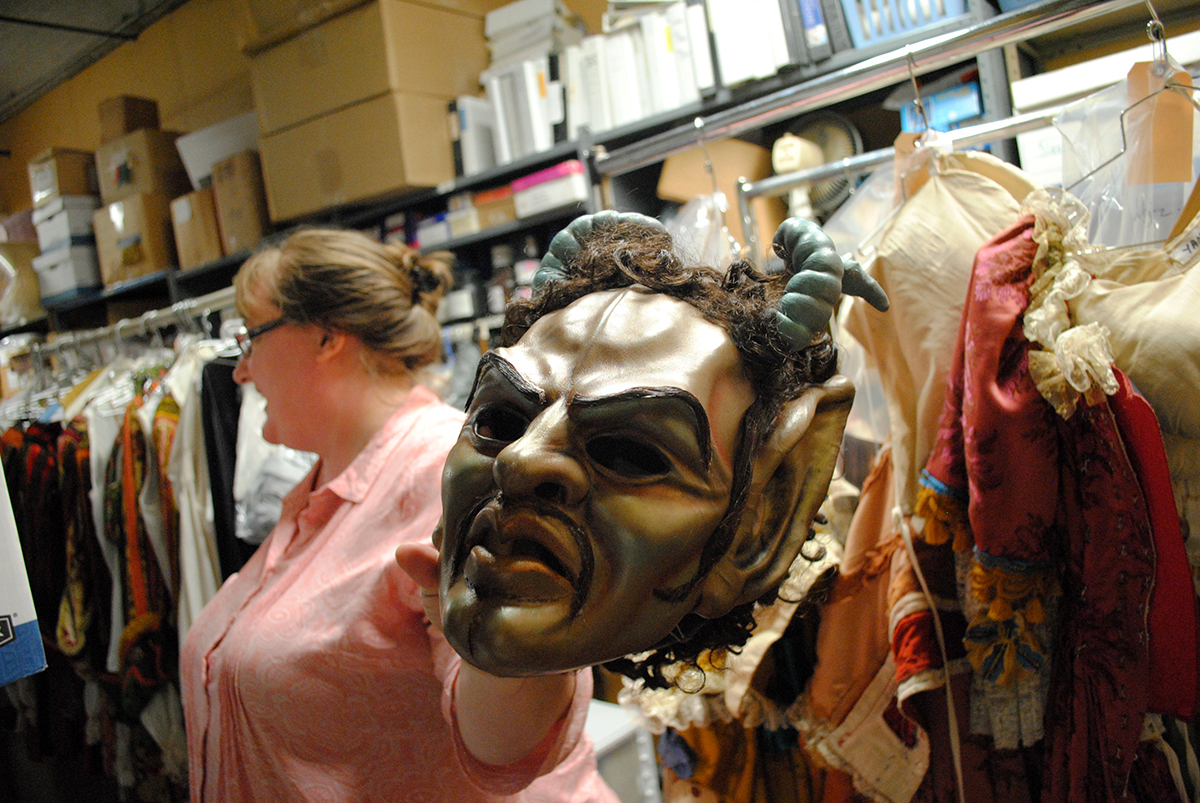
Photo by Madeline Bilis
Wardrobe supervisor Heather McLernon holds a mask in the show.

Photo by Madeline Bilis
One of Princess Aurora’s three tutus sits on a sewing table. Tutus are better stored placed down, rather than hanging on racks.

Photo by Madeline Bilis
A stack of labels is piled on the edge of the table where draper Lisa Dezmelyk works.

Photo by Madeline Bilis
Lovesky holds the king’s coat, which weighs about 40 pounds and is the heaviest piece in the show.
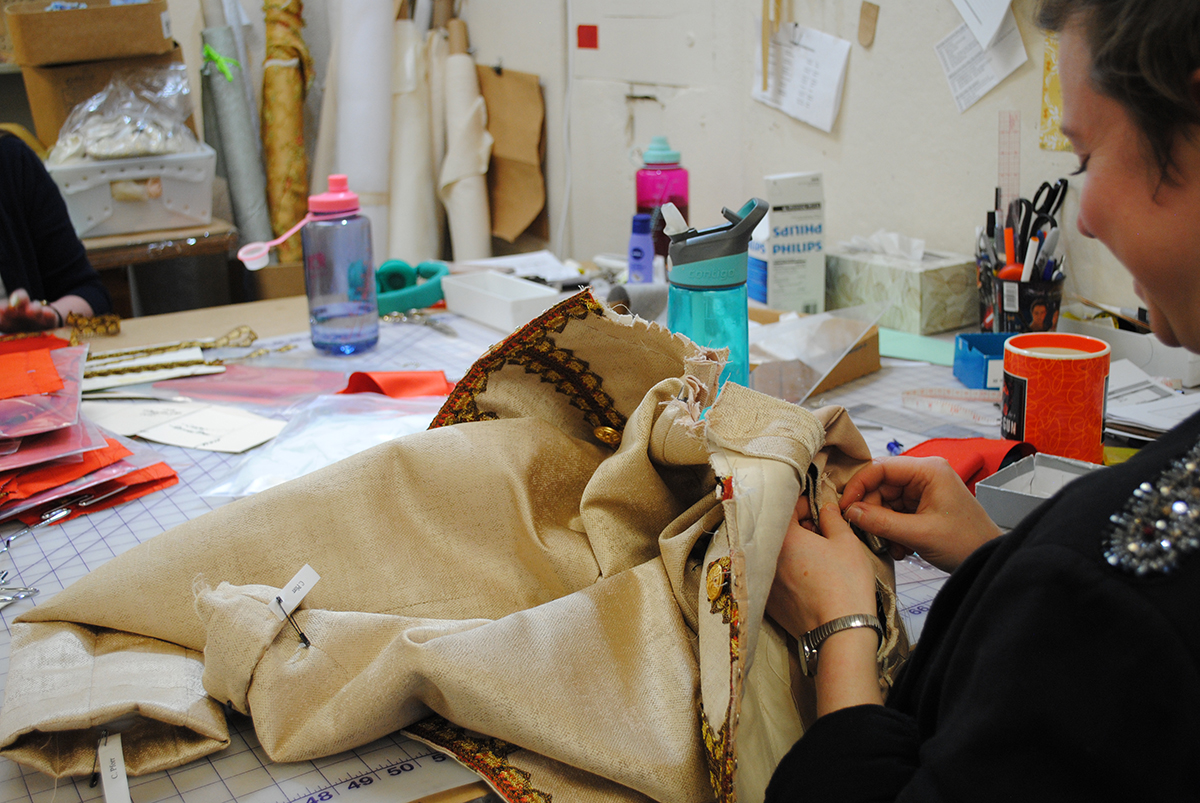
Photo by Madeline Bilis
First hand Nellie Kurz sews a jacket for a mazurka dancer.
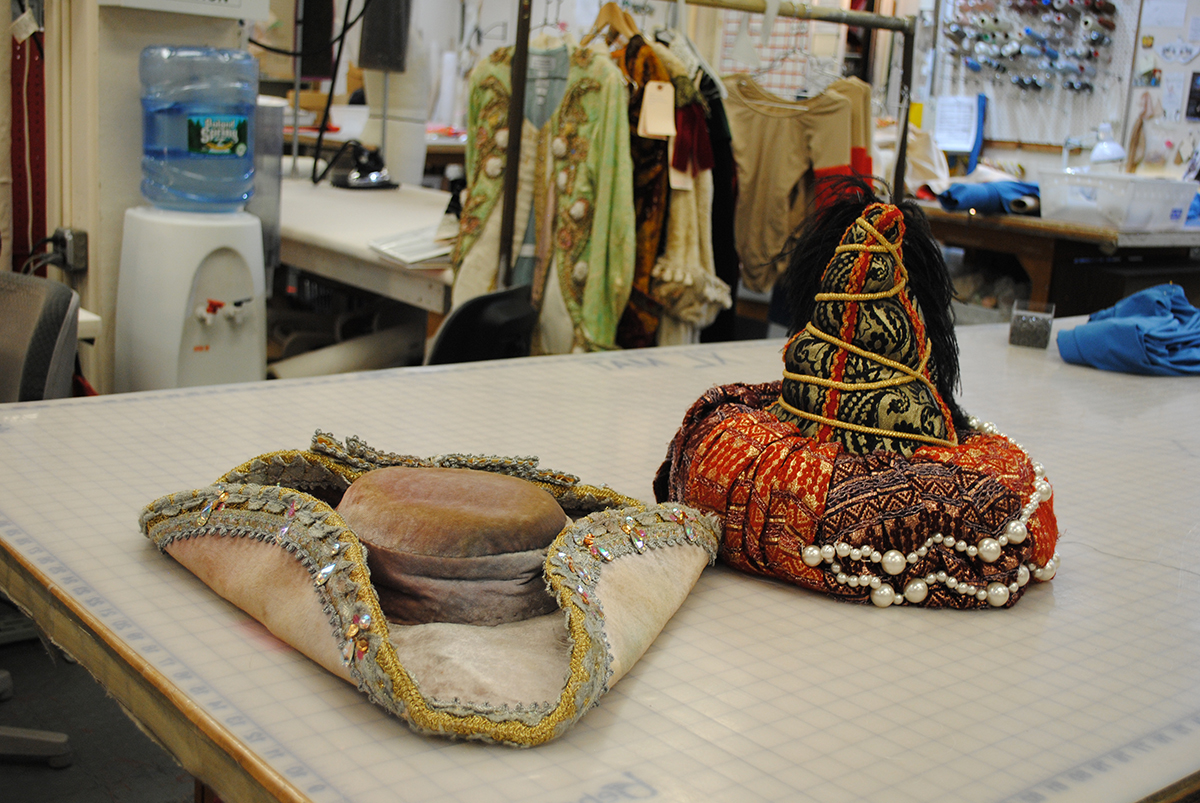
Photo by Madeline Bilis
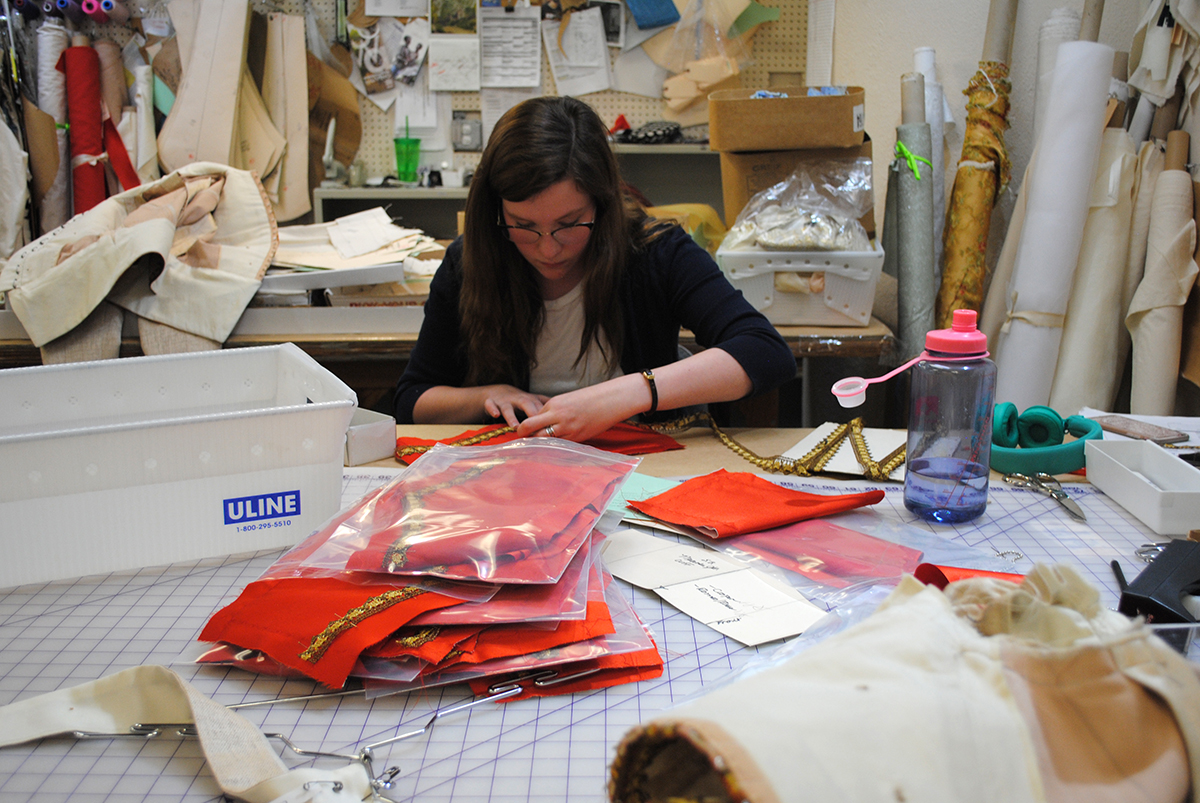
Photo by Madeline Bilis
Stitcher Becky Thorogood works on cuffs for the mazurka dancer jackets.
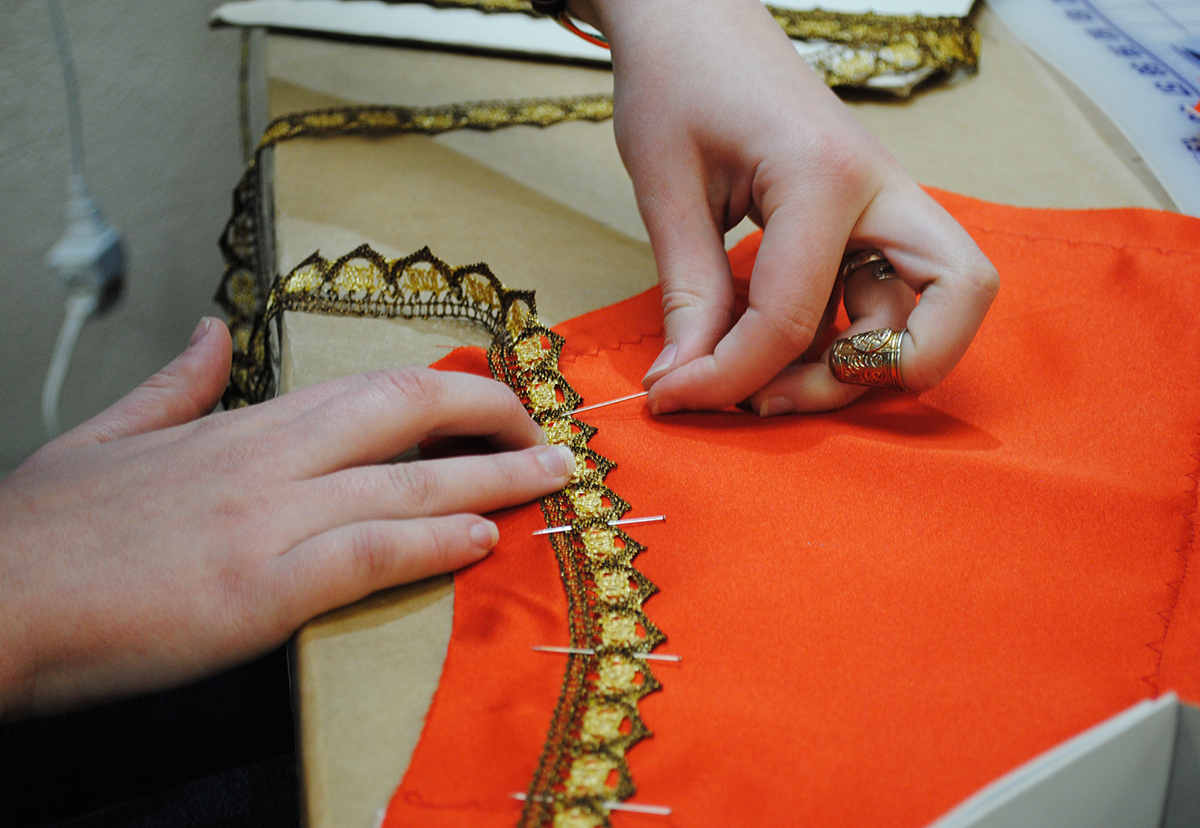
Photo by Madeline Bilis

Photo by Madeline Bilis
McLernon holds accessories for the Golden Vine Fairy.
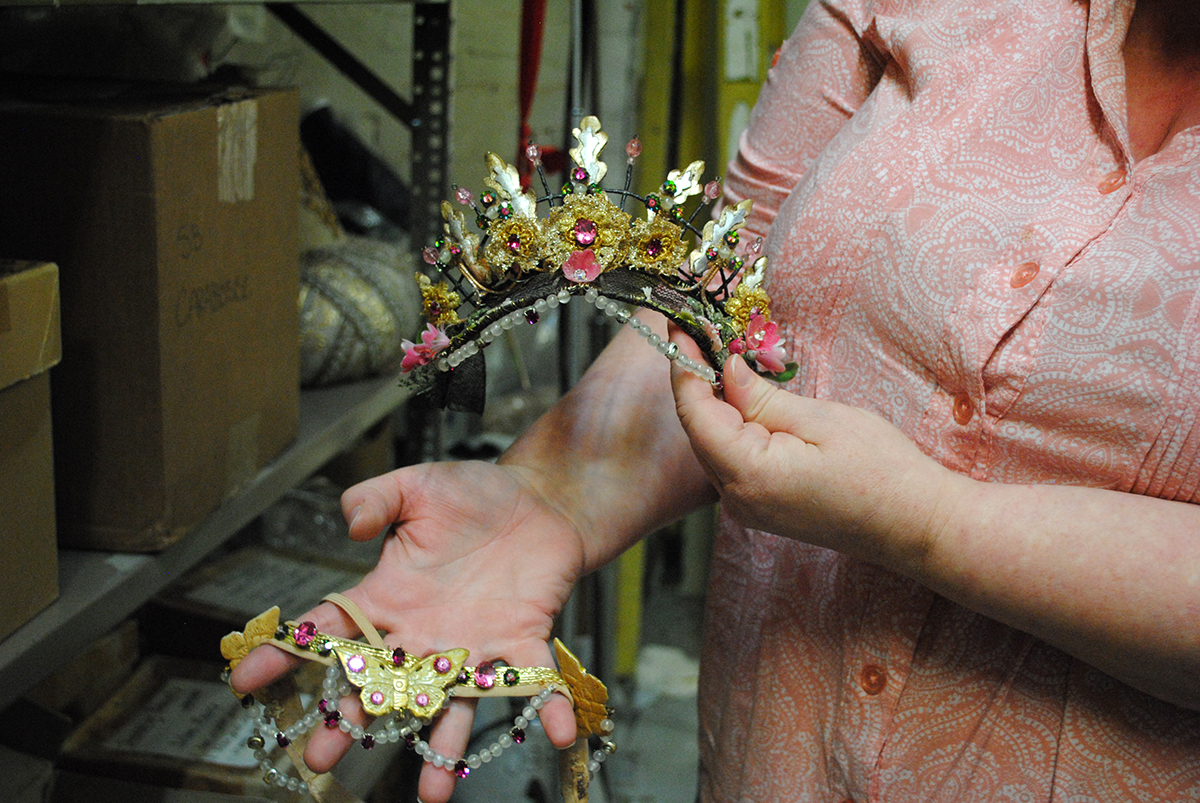
Photo by Madeline Bilis
And for the Enchanted Gardens Fairy.

Photo by Madeline Bilis
A stack of tutus sits in the stock room, complete with puff paint.
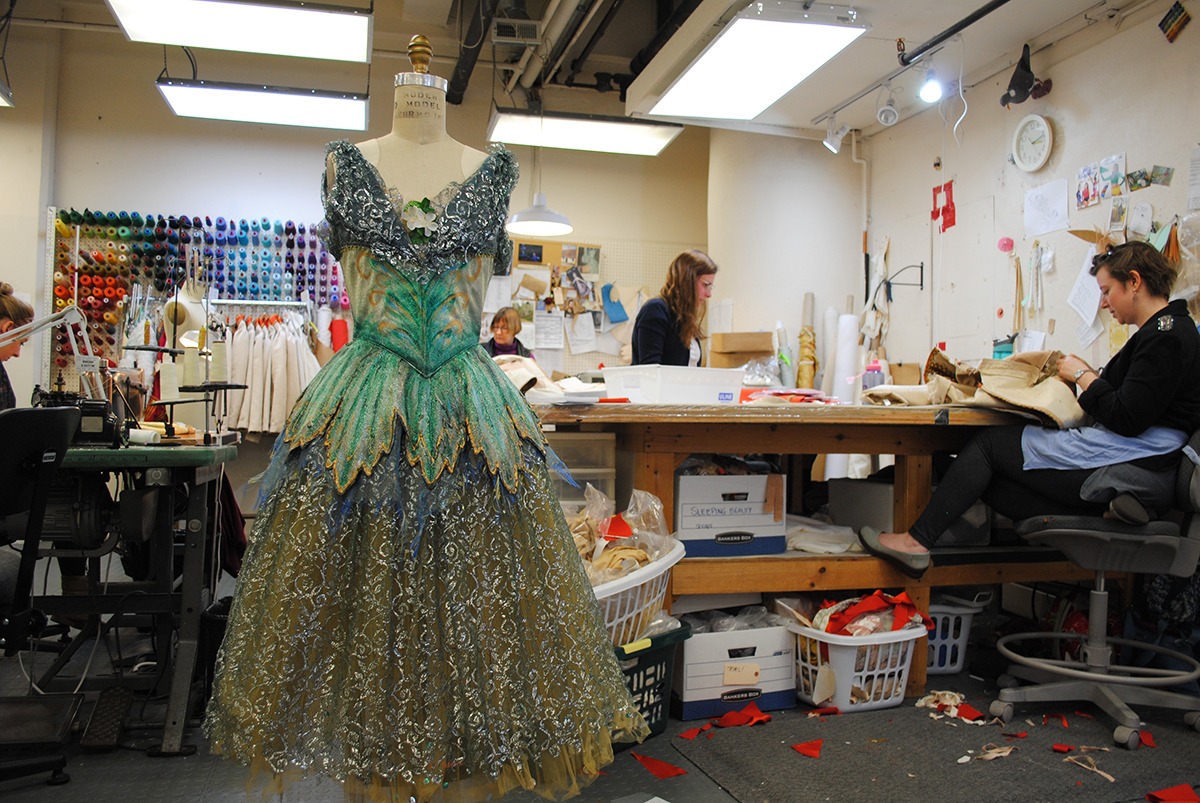
Photo by Madeline Bilis
A tutu for a Vision Nymph is draped on a dress form in the shop.
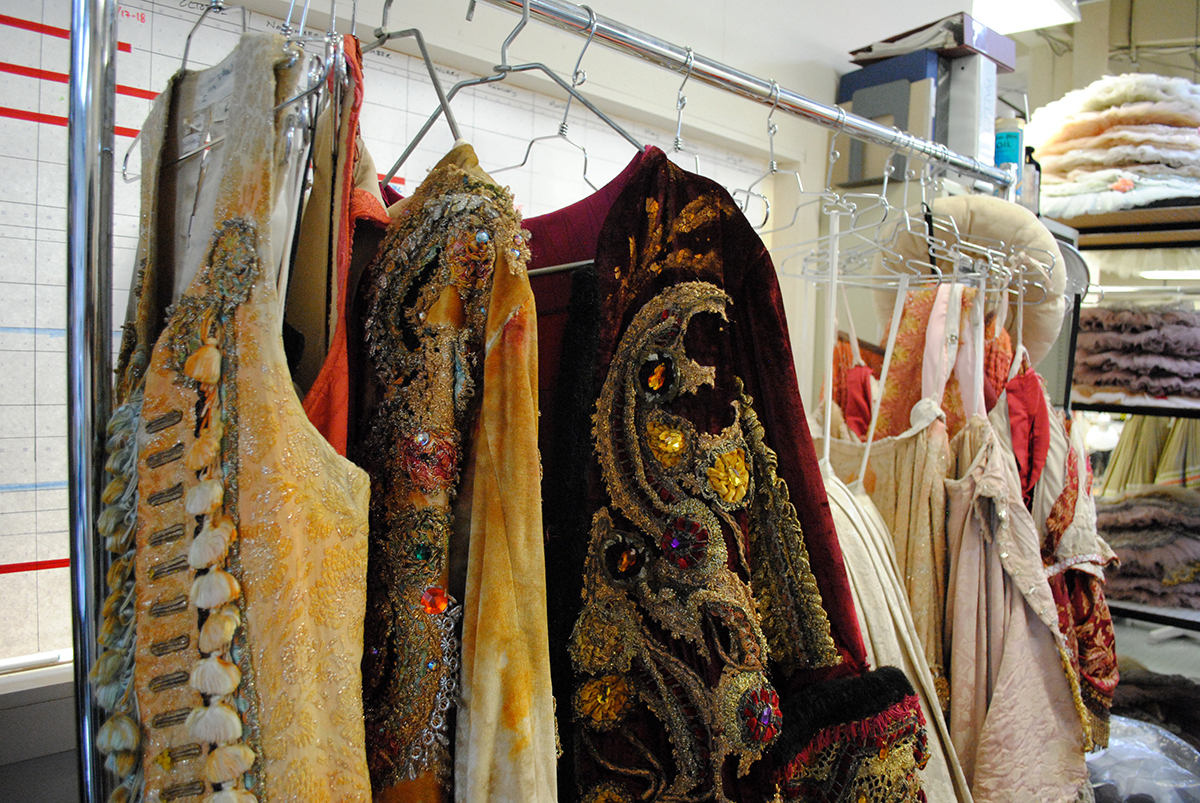
Photo by Madeline Bilis
The Boston Ballet’s production of The Sleeping Beauty will premiere Friday, April 28, and run through May 27. For tickets and more info, visit bostonballet.org.

